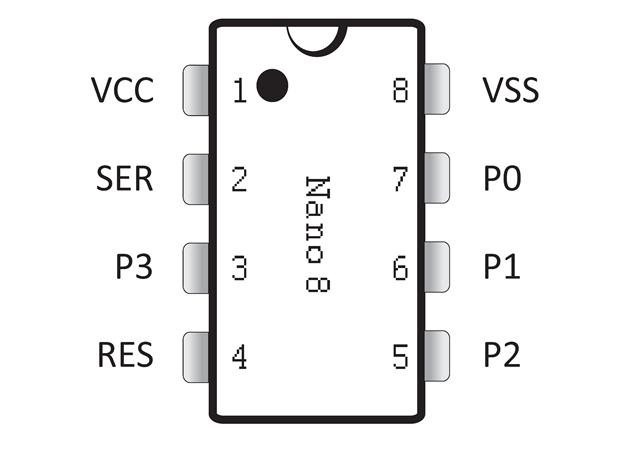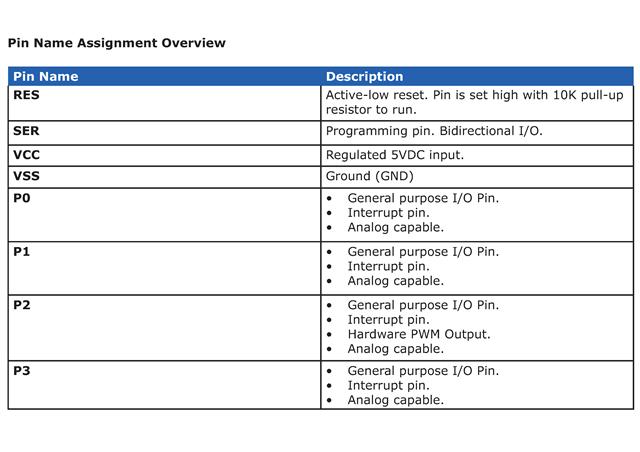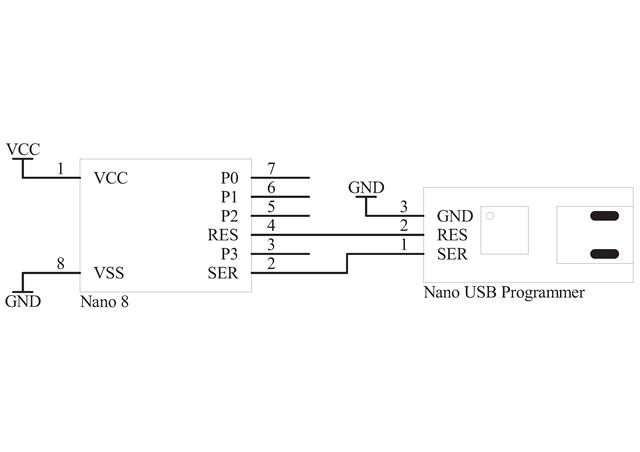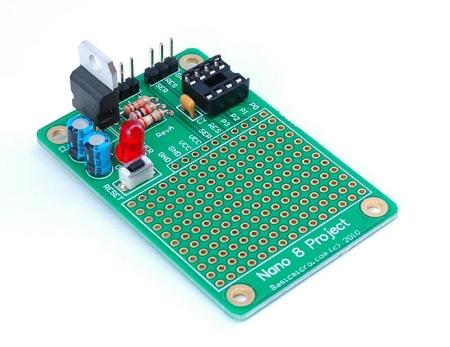|
Nano 8 Mini Board kit works with the new Nano 8 processor,
This board is one of the smallest micro controller boards we have seen, All Nano 8 I/O are brought out to headers, The Nano 8 can be programmed in circuit using the Nano USB Programming adapter or your own custom made USB to TTL RS232 cable. The Nano 8 Mini Board Kit comes with all parts needed to make the PCB shown, the Nano-8 CPU and DIL socket is also included with the kit, 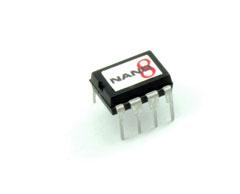 The board will work from 4V to 6V power sources, typically this is from 4 AA batteries. 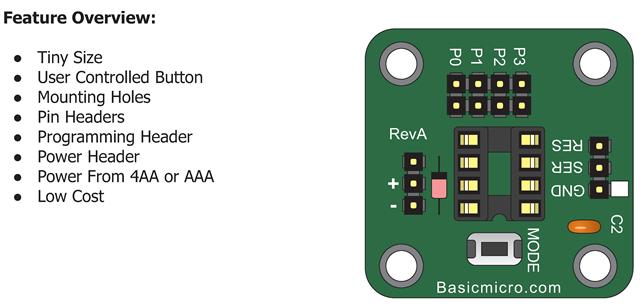 DownloadsThe Nano 8 is a very easy to use micro controller thats programmed using a powerful version of the BASIC programming language, The writing and debugging of the BASIC programs for the entire range of Basic Micro CPU's is done via Basic Micro Studio, this is FREE software you can download to your PC and it makes writing, testing and debugging BASIC programs very easy to do, once you have written a program BMS will check to see if there are any errors and if not you can download the code into the CPU of your target hardware and run it to see if it works and does what you expected, if it does not work then the Basic Micro Studio allows you to run the program a line at a time to check program flow and you can look at variables to see if the results are what you expect as you go line at a time into the program, you can also add DEBUG commands to the program so at specific points the program will send a message or value to the DEBUG window of BMS and that way you can check other hardware is working fine for example the raw values of an external sensor of some kind, once you are happy with the program it can be saved to the BMS as a BASIC file for editing and use later on and you can then download its digital version to the Target CPU in RUN mode, once you have done this you can disconnect the PC from the target and once power is applied the program in the CPU will automatically run without a PC connected, The BASIC programming language is very powerful and it makes it easy to write a program for almost any task, you can set the flow of the program with simple commands and the flow can be change based on a hardware status so for example you can tell the program to check a pin on the CPU and if its high go to one part of the program but if its low go to another or you can read a voltage input from an external sensor for example and turn on a LED if its too high, the BASIC command set also contains special commands for example to drive an LCD display or to send out a PWM signal to a servo unit, you can measure 0-5 Volt signals using the built in ADC or the length of an external pulse from a remote control transmitter for example when building robots, there are a vast number of sensors you can interface to the Basic Micro range of Micro Controllers, once you get in your values from the outside world you can also work with maths commands to do basic addition and subtraction etc on integer or whole Numbers BUT the BASIC commands will also allow you to work in floating point numbers as well so you can do trigonometry for example sine and cosine, tangents etc, all these functions make it easy to use the Basic Micro range for a whole host of tasks such as educational use, robotics, radio control, model engineers, electronics projects and many many more applications, If you get stuck then there is a technical forum where you can post questions on hardware and software and other members can assist you with your task, this all makes it very easy to get up and running with the Basic Micro range of Micro Controllers, You can download the BASIC programming manual here :- Basic Programming Manual Download The Nano runs up to 2x faster on average than competing products! No resonator for reduced part count and more User I/O Pins. Nano 8 Features Runs at over 13,200 BASIC Instructions Per Second |




